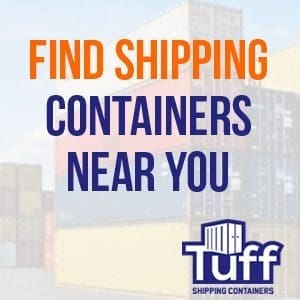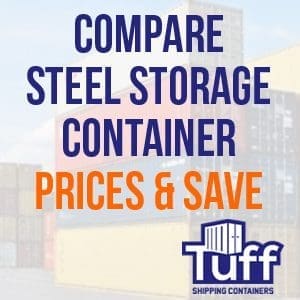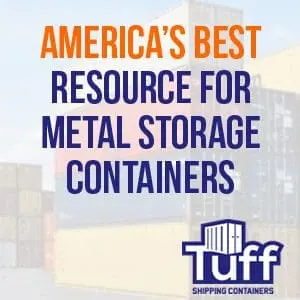
Common Shipping Container Specs and How to Choose a Size
In today’s globalized world, shipping containers play a pivotal role in shipping, storage, and even architecture. From facilitating international trade to providing a versatile option for secure storage and innovative construction projects, the humble shipping container has become an indispensable tool across industries. However, with various specifications, sizes, and customization options available, selecting the right container for your needs can be a daunting task. This blog aims to unravel the complexities of shipping container specs and sizes, offering practical advice to guide you in making an informed decision that aligns with your requirements.
Understanding Shipping Container Specifications
Materials and Construction
Most shipping containers are made from high-grade steel, known for its strength, durability, and resistance to harsh environmental conditions. Understanding the construction and material quality is crucial for assessing a shipping container’s lifespan and suitability for specific uses.
Standard Sizes and Types
Shipping containers typically come in standard sizes: the 20-foot and 40-foot lengths being the most common. However, variations like the high cube, which offers additional height, and specialized types such as refrigerated or open-top containers, cater to specific needs. Familiarizing yourself with these options helps in narrowing down your choices.
Weight Capacity
Each shipping container has a maximum gross weight limit, which includes the weight of the shipping container plus its contents. Knowing these limits is essential, especially for shipping purposes, to avoid overloading and potential legal issues.
Custom Features
Shipping containers can be modified with additional doors, windows, insulation, and ventilation systems, expanding their utility beyond basic storage or transport functions. Consider whether these customizations align with your intended use.

Standard Shipping Container Dimensions and Their Uses
Shipping containers come in a variety of dimensions, catering to a wide range of uses beyond their original purpose of transporting goods. Understanding these dimensions and the projects for which they are best suited can greatly assist in selecting the right container for your specific needs. Below, we explore the most common shipping container dimensions and the types of projects or uses each is well-suited for.
20-Foot Standard Container
- Dimensions: 20’ long x 8’ wide x 8’ 6” high
- Ideal Uses: The 20-foot container is the workhorse of global trade, perfect for small to medium-sized cargo loads. Its compact size makes it suitable for residential storage, small-scale shipping, and innovative uses like pop-up shops or small office spaces. In modular construction, these containers can serve as the basis for cozy living spaces, studios, or efficient office units.
40-Foot Standard Container
- Dimensions: 40’ long x 8’ wide x 8’ 6” high
- Ideal Uses: Doubling the capacity of the 20-foot container, the 40-foot version is preferred for larger shipping needs and commercial storage. It’s also favored in construction for creating more spacious homes, offices, or classrooms. Due to its length, it offers more flexibility for interior design and partitioning, making it ideal for larger modular homes, spacious office complexes, or commercial workshops.
40-Foot High Cube Container
- Dimensions: 40’ long x 8’ wide x 9’ 6” high
- Ideal Uses: The additional foot in height compared to standard containers allows for more vertical storage space, making high cube containers perfect for transporting or storing tall items. In construction, this extra height is beneficial for creating more airy and comfortable living or working spaces, accommodating loft beds or mezzanines, and ensuring adequate insulation and ceiling space.
10-Foot Container
- Dimensions: 10’ long x 8’ wide x 8’ 6” high
- Ideal Uses: Though less common, 10-foot containers are perfect for tight spaces and small-scale storage needs. They’re used for personal storage, as garden sheds, or for storing tools and equipment on construction sites. Their compact size also lends itself well to creative uses such as kiosks, small cafes, or as individual modules in modular construction projects.



Specialized Container Types and Dimensions
Open Top Container
- Dimensions: Typically available in 20’ and 40’ lengths with similar width and height to standard containers.
- Ideal Uses: Open top containers are designed for cargo that needs to be loaded from the top or sides due to size or shape constraints. They are excellent for heavy machinery, tall equipment, or bulk materials like scrap metal. In creative projects, they offer unique opportunities for installations that require top access or natural light, such as greenhouses or art studios.
Refrigerated (Reefer) Containers
- Dimensions: Commonly available in 20’ and 40’ lengths with standard width and slightly shorter height due to refrigeration equipment.
- Ideal Uses: Reefer containers are essential for transporting or storing perishable goods that require temperature control, such as food products, flowers, or pharmaceuticals. They are also used in innovative projects that require controlled temperature environments, including mobile bars, temporary food storage during events, or even in farming for controlled plant growth environments.
Choosing the Right Dimensions for Your Project
Selecting the correct container dimensions depends on several factors:
- Purpose and Space Requirements: Consider what you will be storing or the space you need for your project. The intended use will largely dictate the required dimensions.
- Location and Placement: Assess the available space where the container will be placed. Ensure there’s adequate room not just for the container but also for delivery and access.
- Budget: Larger containers generally cost more. Balance your space requirements with your budget to find a suitable option.
- Future Needs: Think about potential future uses or expansions. Opting for a slightly larger container might offer more versatility down the line.
Shipping containers, with their variety of dimensions and the ability to be customized, offer a flexible solution for a wide range of projects—from straightforward storage needs to complex construction projects. Understanding the different dimensions available and matching them to your project’s specific needs ensures that you make the most out of your investment, whether for shipping, storage, or an innovative construction project. With the right planning and consideration, a shipping container can be transformed into a solution that is not just practical but also creatively inspiring.


Common Uses of Shipping Containers
Shipping and Transport
Shipping containers revolutionized logistics by standardizing international cargo transport, making them indispensable in the shipping industry.
Storage Solutions
Their durability and security features make shipping containers excellent options for temporary or long-term storage needs across various sectors.
Modular Construction
The trend of using shipping containers for building purposes has gained momentum, showcasing their versatility in creating affordable, modular structures.
How to Choose the Right Shipping Container Size
Assessing Your Needs
Begin by clearly defining what you intend to use the container for. Whether it’s for shipping goods overseas, storing equipment, or a construction project, your primary use case will significantly influence the size and type of shipping container you need.
Space Considerations
Calculate the space required for your goods or project. Consider not only the floor area but also the height. High cube shipping containers may be necessary for taller items or projects needing extra vertical space.
Weight and Volume Limits
Factor in the weight and volume of the contents. For heavy or bulky items, ensure the shipping container’s weight capacity meets your requirements without exceeding legal transport limits.
Access and Placement
Think about the container’s placement. Ensure there’s adequate space for delivery and that the shipping container can be accessed as needed for loading and unloading.



Budget and Cost-Effectiveness
Balance your size and specification needs with your budget. Larger shipping containers or those with custom features cost more, so consider what’s essential for your project.
Future-Proofing
Anticipate potential future needs. Choosing a slightly larger size might offer more flexibility and scalability for evolving requirements.



Procuring and Preparing Your Shipping Container
Where to Buy or Rent Shipping Containers
- Direct from Suppliers: Many companies specialize in selling both new and used shipping containers. Purchasing directly from suppliers allows you to choose from a wide range of sizes, conditions, and custom features.
- Online Marketplaces: Platforms like eBay or specialized container sales websites can offer competitive prices and the convenience of shopping around from your computer. However, it’s essential to vet the sellers and inspect the containers when possible.
- Local Depots: Buying or renting from local depots can save on delivery costs and allows for physical inspection before purchase, ensuring you get a container that meets your needs.
Inspecting a Container Before Purchase
- Check for Damage: Look for any signs of significant rust, dents, or holes. Minor surface rust is common but should not compromise the structural integrity of the container.
- Ensure Doors Function Properly: The doors should open and close smoothly. Stiff or misaligned doors can indicate frame issues.
- Verify Watertight Integrity: Containers should be watertight to protect contents from moisture and water damage. Inspect the roof and door seals especially.
Preparing Your Container for Use
- Cleaning and Maintenance: Start with a thorough cleaning, inside and out. Consider treating the container with rust inhibitors and repaint if necessary to extend its lifespan.
- Ventilation: Adding vents can help prevent condensation buildup, particularly if the container will be used for storage or living spaces.
- Insulation: For containers repurposed into offices, homes, or other climate-controlled environments, insulation is crucial. Spray foam or panel insulation are popular options.
- Electrical and Plumbing: If your project requires utilities, planning for electrical wiring and plumbing at the outset is essential. Professional installation is recommended to ensure safety and compliance with local codes.
- Foundation and Placement: Depending on the use, containers may need to be placed on a foundation to ensure stability and level. Consider the type of foundation that best suits your project and the ground conditions of the site.
Utilizing Containers for Sustainable Practices
Beyond the functional aspects of procuring and preparing containers, it’s worth noting the role of shipping containers in promoting sustainability. Reusing containers for storage, transport, or construction not only extends the lifecycle of these steel structures but also reduces the demand for raw materials and minimizes construction waste. For businesses and individuals committed to eco-friendly practices, shipping containers offer a path to achieving sustainability goals without compromising on durability or design flexibility.
Choosing the right shipping container involves a careful consideration of specifications, intended use, and future needs. By understanding the fundamental aspects of shipping container sizes and specs, you can make a choice that not only meets your current requirements but also offers flexibility for future growth. Whether you’re shipping goods internationally, looking for efficient storage solutions, or embarking on a modular construction project, the right container can significantly enhance the success of your endeavor. We encourage you to use this guide as a starting point and consult with professionals to find the perfect shipping container solution tailored to your needs.

Leave a Reply